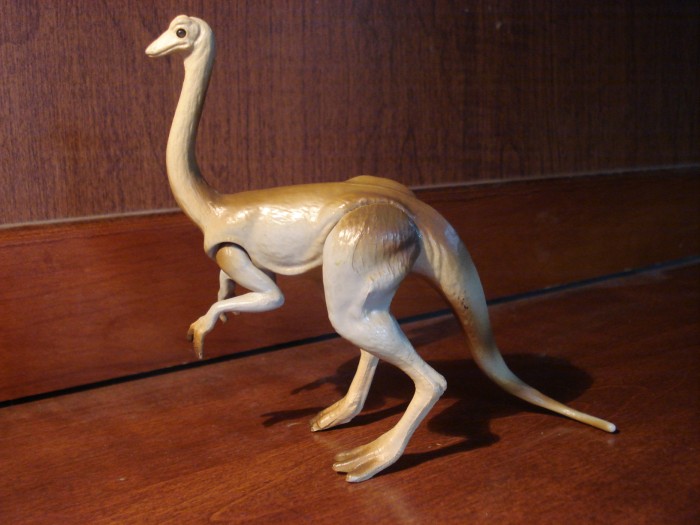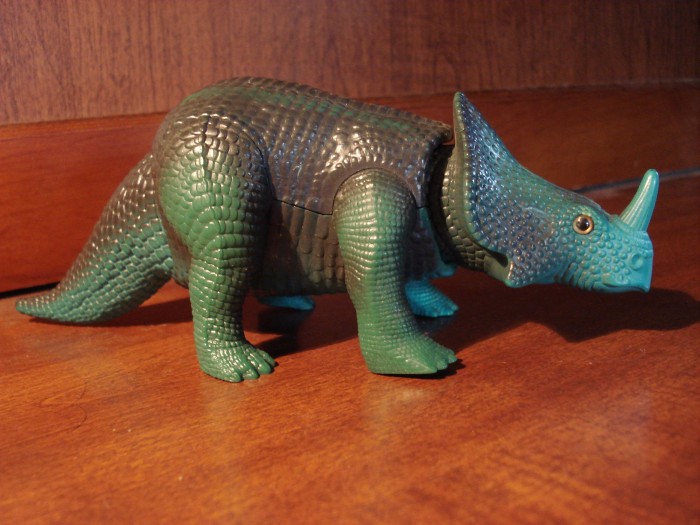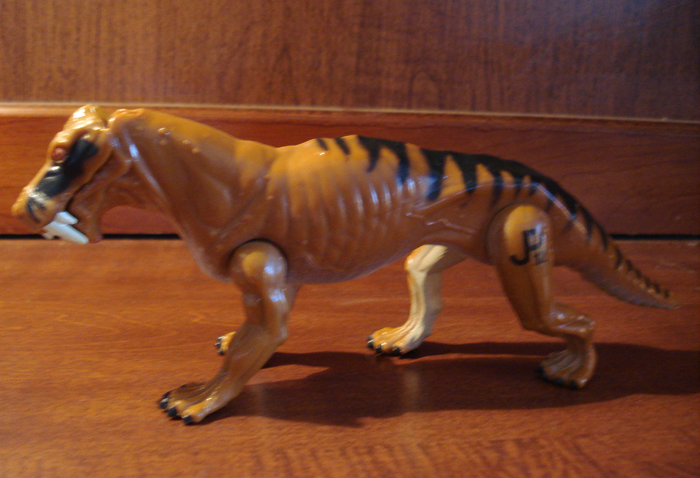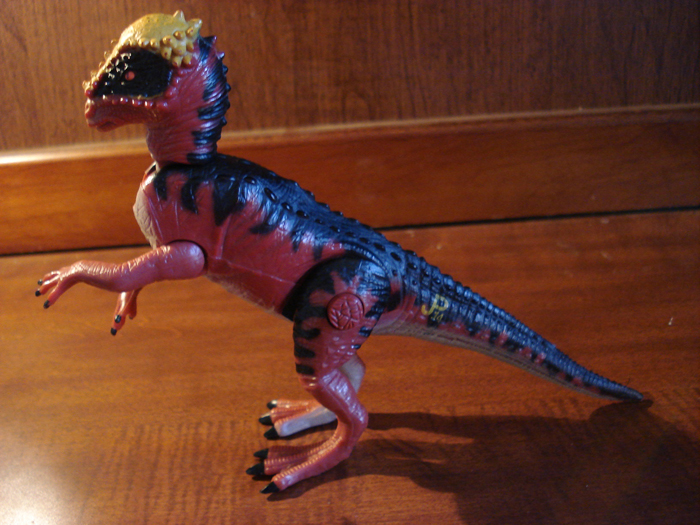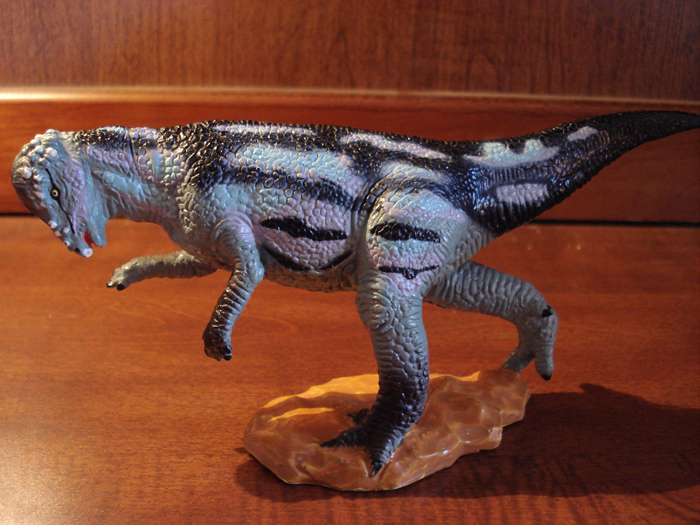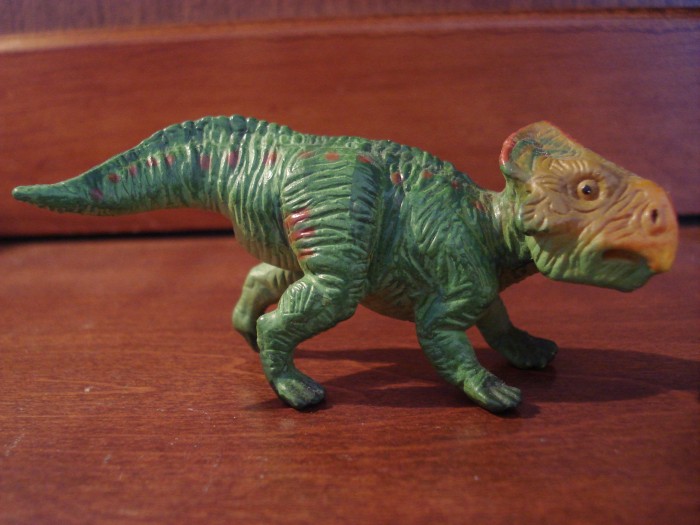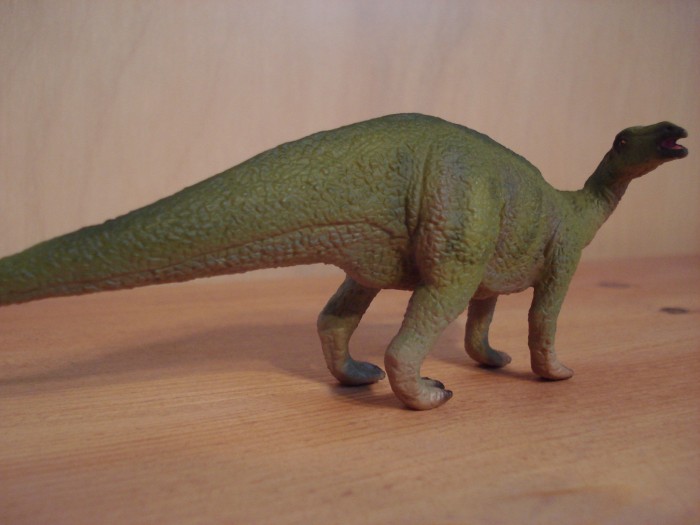
Review and photos by Griffin
Tenontosaurus was an Iguanodontid ornithopod dinosaur that lived in the Western United States during the early Cretacious period. In life it would have co-existed with dinosaurs like Iguanodon, Dienonychus, Utahraptor and Acrocanthosaurus. Thanks to a Tenontosaurus skeleton discovered with Dienonychus chew marks on its bones in addition to Dienonychus skeletons nearby, the idea of pack-hunting Dromaeosaurs is now widely accepted. Unfortunately this has also lead to the image of poor Tenontosaurus to ALWAYS be the prey item for Deinonychus. (Seriously, google image search “Tenontosaurus”. Like 80% of the images that pop up will be of it being attacked and/or eaten by the Deinonychus.) Medullary bone tissue, which is used by modern birds for laying eggs, has also been found on the bones of Tenontosaurus fossils.
Read more
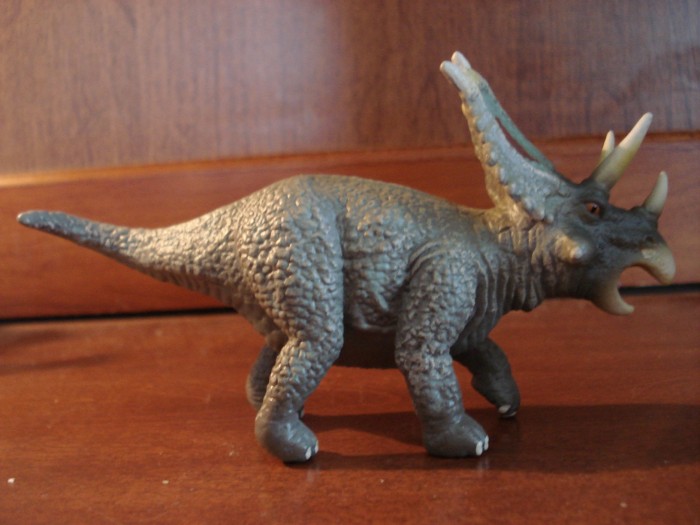

 Chris DiPiazza (aka Griffin8891) has worked with exotic animals for seven years now and has been a wildlife exhibitor, bringing live animals to camps and schools to educate children, for almost four years. In addition to living animals, he has an equally, if not stronger affinity for prehistoric ones as well. He also loves drawing, sculpting and painting and has recently illustrated a series of illustrations of dinosaurs to be used in lecture slides at Rutgers University in New Brunswick, NJ (which can be found under his thread in the art section of the forums). As far as dinosaur models go, he does not consider himself a true collector, but one who buys only what truly interests him. He loves all species of dinosaurs and other manner of prehistoric creatures but ultimately, he considers the Ceratopsians his favorites.
Chris DiPiazza (aka Griffin8891) has worked with exotic animals for seven years now and has been a wildlife exhibitor, bringing live animals to camps and schools to educate children, for almost four years. In addition to living animals, he has an equally, if not stronger affinity for prehistoric ones as well. He also loves drawing, sculpting and painting and has recently illustrated a series of illustrations of dinosaurs to be used in lecture slides at Rutgers University in New Brunswick, NJ (which can be found under his thread in the art section of the forums). As far as dinosaur models go, he does not consider himself a true collector, but one who buys only what truly interests him. He loves all species of dinosaurs and other manner of prehistoric creatures but ultimately, he considers the Ceratopsians his favorites.



